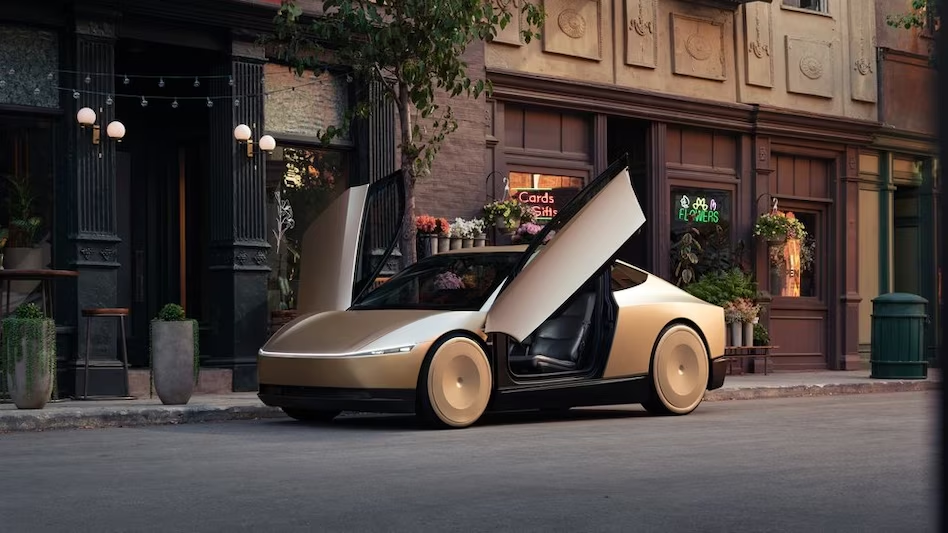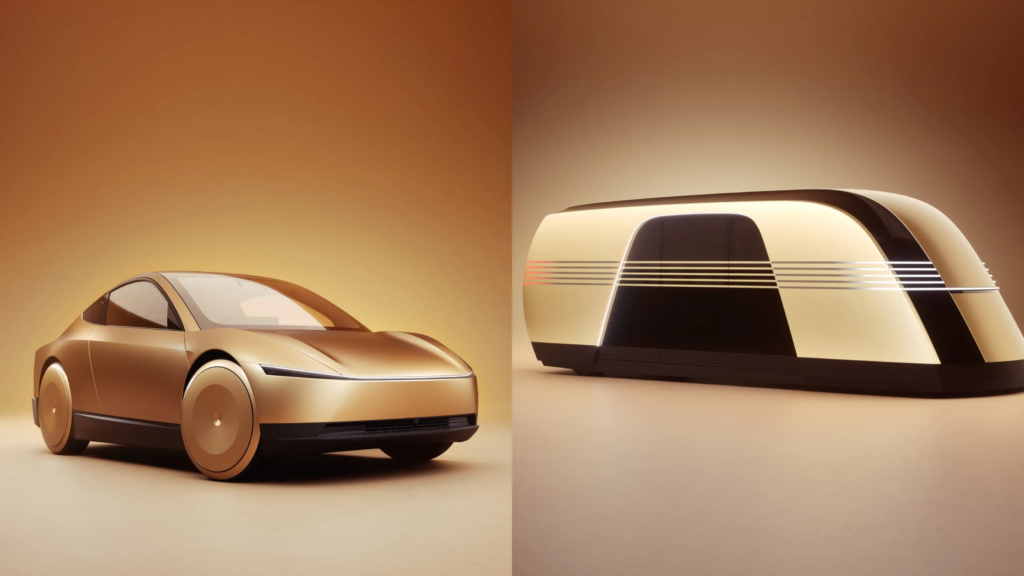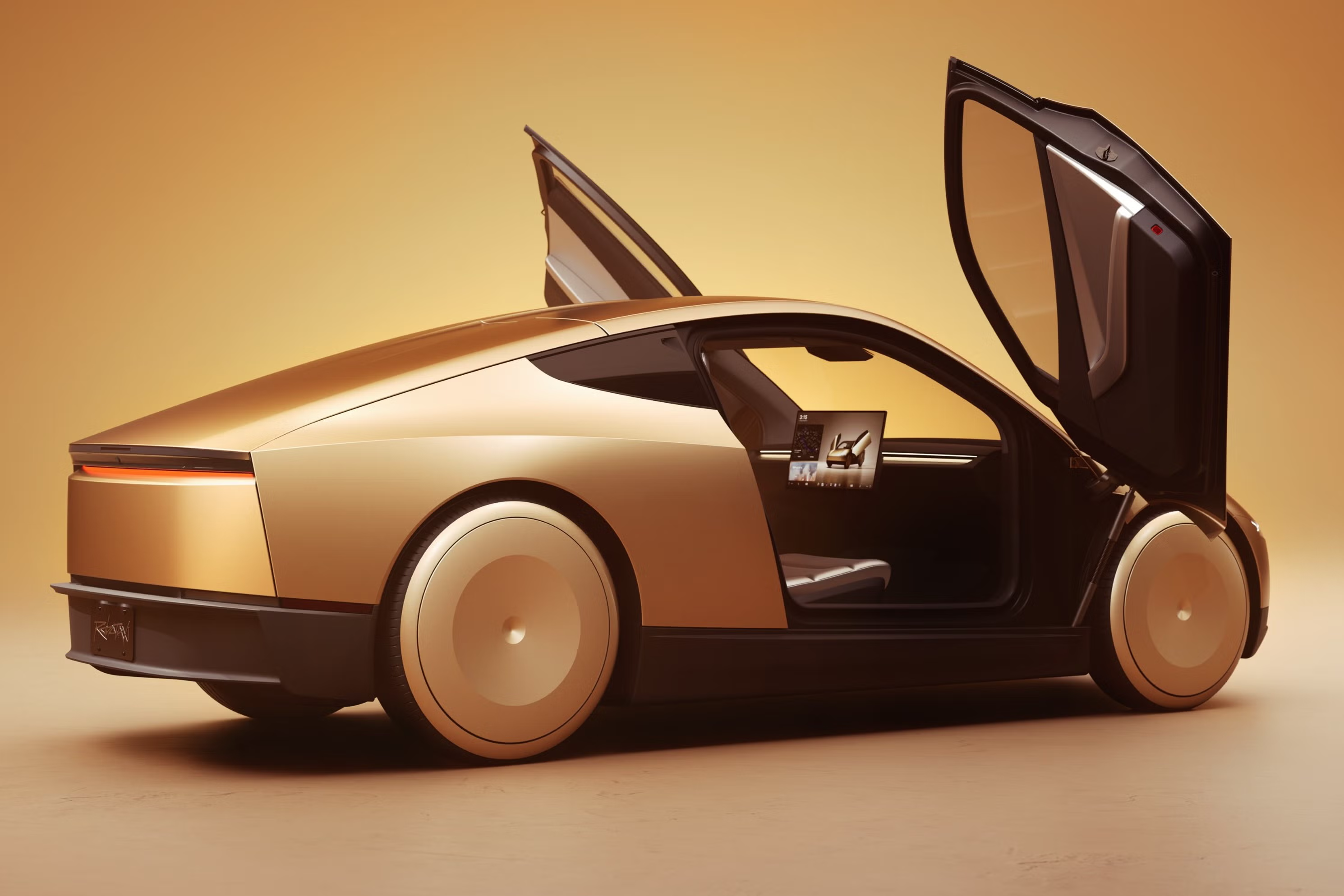Tesla, known for pushing the boundaries of automotive innovation, made headlines again as CEO Elon Musk unveiled the highly anticipated Cybercab, a fully autonomous robotaxi. At a grand event held at Warner Bros. Studios in Burbank, California, Musk introduced this futuristic vehicle, setting the stage for what could be a revolutionary shift in urban transportation.
With no steering wheel, no pedals, and a sleek, chrome exterior with winged doors, the Cybercab promises to deliver an entirely new way of traveling—if it ever makes it to production. Musk set an ambitious production goal for 2026 but, as is often the case with Tesla, timelines remain elusive.
The Future of Self-Driving Technology: Cybercab’s Design and Concept
The Cybercab represents Tesla’s boldest attempt yet to develop a fully autonomous vehicle, eliminating the need for human intervention.
Read : Tesla SpaceX and X Staff Donate to Harris as Musk Backs Trump
Designed as a robotaxi, it aims to transport passengers from point A to point B without the need for a driver, providing a comfortable, lounge-like experience along the way. Musk described it as a vehicle where passengers could “do whatever they want,” while the car drives itself.
Read : Optimus Robot Could Drive Tesla’s Valuation to $25 Trillion
The vehicle’s design includes winged doors, a streamlined chrome body, and an interior that’s free from traditional automotive controls. By removing the steering wheel and pedals, Tesla’s Cybercab redefines what a vehicle can be, focusing on providing an experience that’s more akin to riding in a high-tech, mobile living room.
However, the lack of clarity on the actual production timeline and regulatory approval casts doubt on when, or even if, we’ll see Cybercabs on the roads.

The idea of a robotaxi is central to Musk’s vision for the future of Tesla and the broader autonomous vehicle market. He has long pushed for vehicles that can operate without any human supervision, a goal he believes will be achieved by Tesla’s existing driver-assistance technology, such as Autopilot and Full Self-Driving.
However, while these systems offer impressive features, they still require human drivers to remain alert and ready to take control. The Cybercab, if it meets its ambitious goals, would eliminate this need, representing the next evolution in autonomous driving technology.
Challenges in Regulatory Approval and Competition
Despite Musk’s optimism, Tesla faces significant hurdles before the Cybercab can hit public roads. Regulatory approval is one of the largest obstacles.
Fully autonomous vehicles without traditional controls, such as steering wheels and pedals, are considered “noncompliant vehicles” by the National Highway Traffic Safety Administration (NHTSA). For Tesla to sell or operate the Cybercab, it would need an exemption from the NHTSA, a process that is both lengthy and uncertain.
As of early October, Tesla had yet to apply for the necessary permit, and there is no guarantee that regulatory agencies will approve such a vehicle anytime soon.
The NHTSA has only granted one general exemption for a fully autonomous vehicle to date, which was given to Nuro, a company that produces low-speed delivery robots. Nuro’s process took over a year, and it is unclear how long Tesla might have to wait for similar approval, if granted at all.
While Musk expressed confidence that regulators would eventually approve the Cybercab, citing safety concerns and the moral obligation to favor safer, autonomous technology, the regulatory landscape is fraught with challenges.
In previous earnings calls, Musk suggested that if Tesla can prove the Cybercab is safer than human drivers, regulators will have no choice but to allow it on the roads.
However, this assumes that Tesla can meet the stringent safety standards required for autonomous vehicles, a goal that many competitors, such as Alphabet’s Waymo, have already started to achieve.

Tesla lags behind in the robotaxi market compared to companies like Waymo, which operates driverless ride-hailing services in major cities such as San Francisco, Los Angeles, and Phoenix.
While Tesla’s focus has traditionally been on selling vehicles with advanced driver-assistance systems, its late entry into the autonomous ride-hailing space leaves it playing catch-up in an increasingly competitive market.
Skepticism and Uncertainty: The Road Ahead for the Cybercab
One of the biggest concerns surrounding the Cybercab is the uncertainty of its production timeline. Musk has repeatedly made predictions about fully autonomous vehicles, many of which have not materialized. The Cybercab’s projected production date of 2026 is ambitious but remains highly uncertain.
Analysts, such as Gene Munster from Deepwater Asset Management, noted that while people may be impressed by the Cybercab’s design, the distant timeline makes it difficult for skeptical investors to get excited about Tesla’s push into autonomy.
Musk has a history of over-promising and under-delivering on Tesla’s autonomous driving initiatives. Over the past decade, he has made numerous claims that Tesla would soon have vehicles capable of driving themselves without human supervision.
However, despite the progress made in driver-assistance technology, Tesla’s current offerings still require a human driver to take control in critical situations. The Full Self-Driving (FSD) system, while advanced, falls short of the fully autonomous capabilities Musk has long touted.
Musk’s presentation of the Cybercab was more focused on the concept than concrete details about when and how it will be produced. He did not provide specifics about the timeline for receiving regulatory approval or how long it would take Tesla to navigate the legal and safety frameworks needed to operate such a vehicle on public roads.
Given that Tesla has yet to apply for the necessary permits, the 2026 production date appears overly optimistic, particularly when factoring in the time it takes to receive approval and scale production.
Further complicating matters is Tesla’s history of delaying major product releases. Musk initially announced the robotaxi concept earlier in 2024, but the event was postponed several times, with Musk citing the need for additional design changes.
Even at the most recent unveiling, Musk hinted at the possibility of further delays, acknowledging that the company still had significant work to do before the vehicle could be mass-produced.

Tesla’s competitors have already begun to commercialize their autonomous driving technology. Waymo’s fully autonomous ride-hailing service, for example, is already in use in major cities, providing real-world examples of how robotaxis can function.
By contrast, Tesla’s Cybercab is still years away from production, raising concerns about whether Tesla can catch up in the rapidly evolving market for autonomous vehicles.
Elon Musk’s unveiling of the Tesla Cybercab, a fully autonomous robotaxi, is a bold step toward realizing his vision of a driverless future. The Cybercab, with its sleek design and futuristic features, captures the imagination of what urban transportation could look like in the next decade.
However, significant challenges remain, from regulatory approval to Tesla’s ability to deliver on its promises. While Musk has set a target for 2026 production, the timeline remains unclear, and Tesla faces stiff competition from established autonomous vehicle companies like Waymo.
For now, the Cybercab is more of a concept than a reality, with many hurdles left to overcome before it can be mass-produced and deployed on public roads. Whether Tesla can meet its ambitious goals and bring this revolutionary vehicle to market remains to be seen.
What is certain, however, is that the future of transportation is shifting rapidly, and the race to dominate the autonomous vehicle market is far from over.

